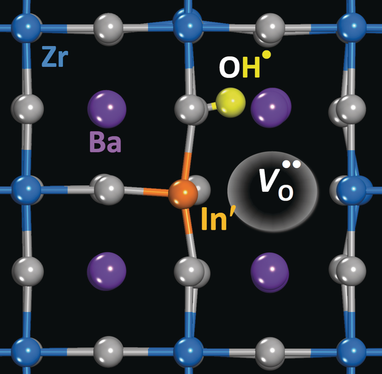Vacancy-Induced Electronic Structure Variation of Acceptors and Correlation with Proton Conduction in Perovskite Oxides
Graphical Abstract
The value of nothing: The role of positively charged oxygen vacancies in proton conduction is demonstrated in acceptor-doped BaZrO3 and BaCeO3. A combination of density functional theory calculations, impedance spectroscopy, and atomic-column images shows that the control of acceptor-vacancy clustering is an efficient way of overcoming proton trapping toward acceptors.
Abstract
In most proton-conducing perovskite oxides, the electrostatic attraction between negatively charged acceptor dopants and protonic defects having a positive charge is known to be a major cause of retardation of proton conduction, a phenomenon that is generally referred to as proton trapping. We experimentally show that proton trapping can be suppressed by clustering of positively charged oxygen vacancies to acceptors in BaZrO3−δ and BaCeO3−δ. In particular, to ensure the vacancy–acceptor association is effective against proton trapping, the valence electron density of acceptors should not significantly vary when the oxygen vacancies cluster, based on the weak hybridization between the valence d or p orbitals of acceptors and the 2p orbitals of oxygen.





